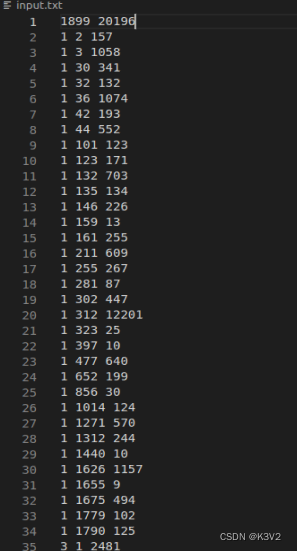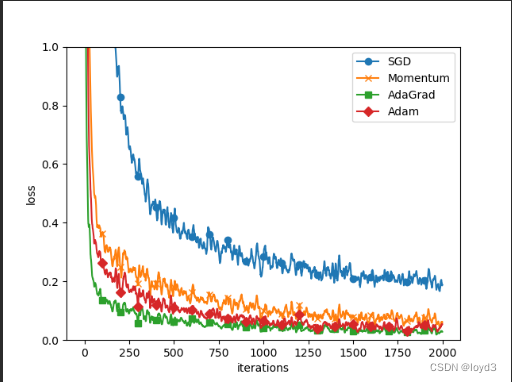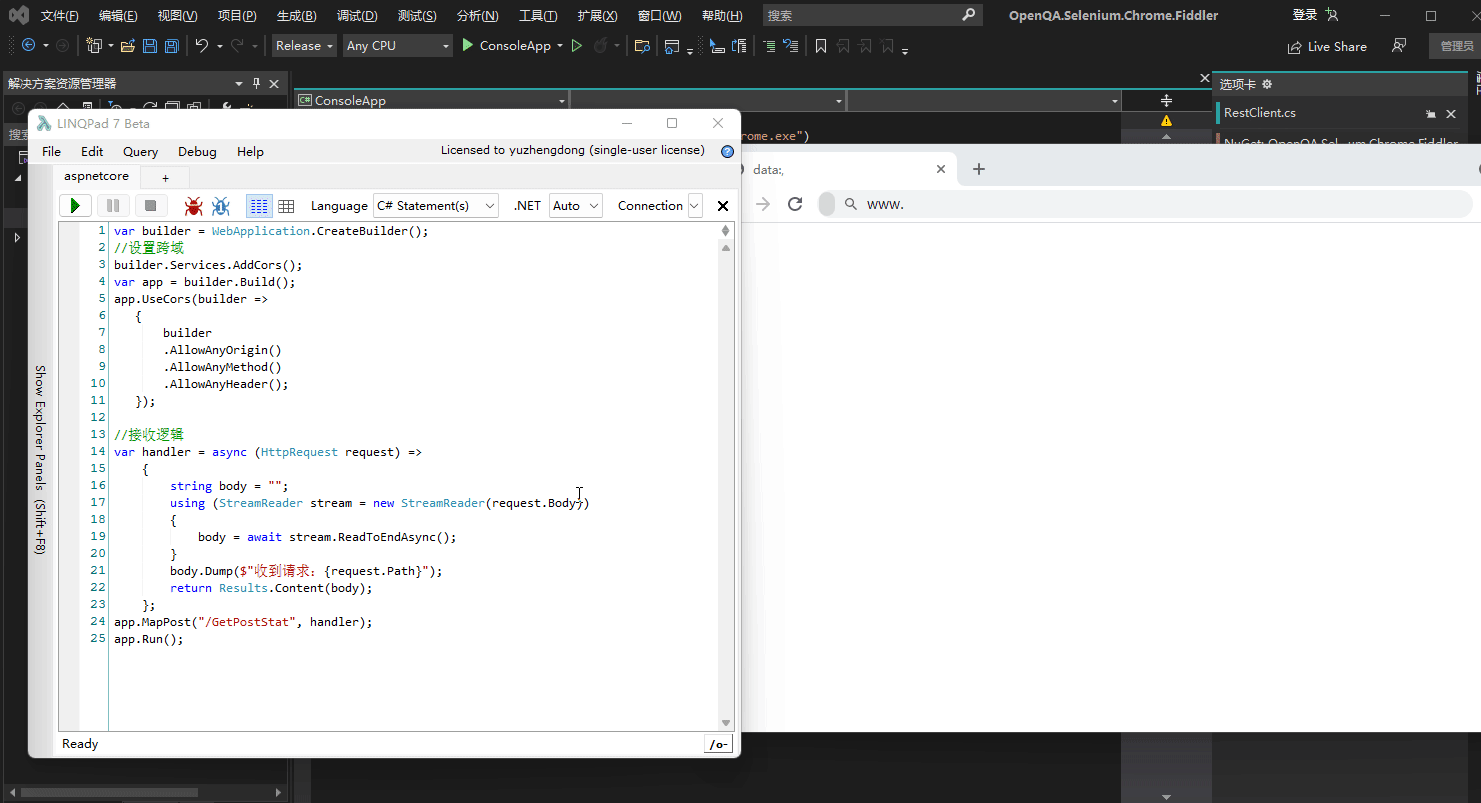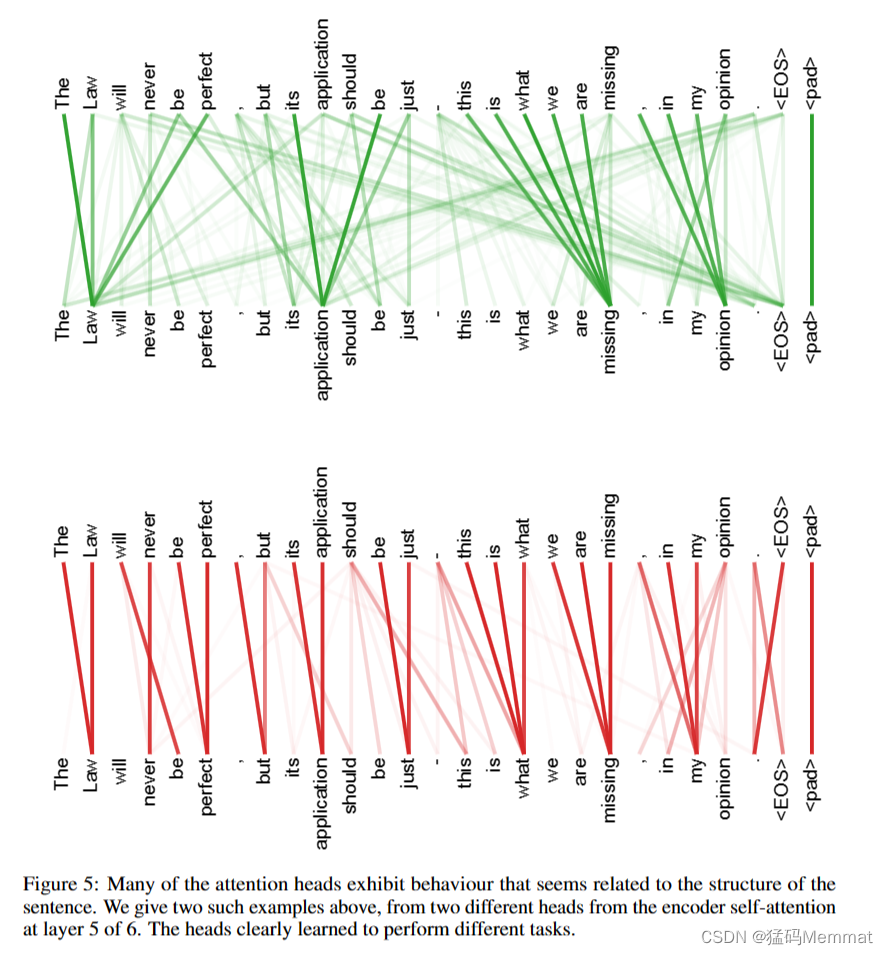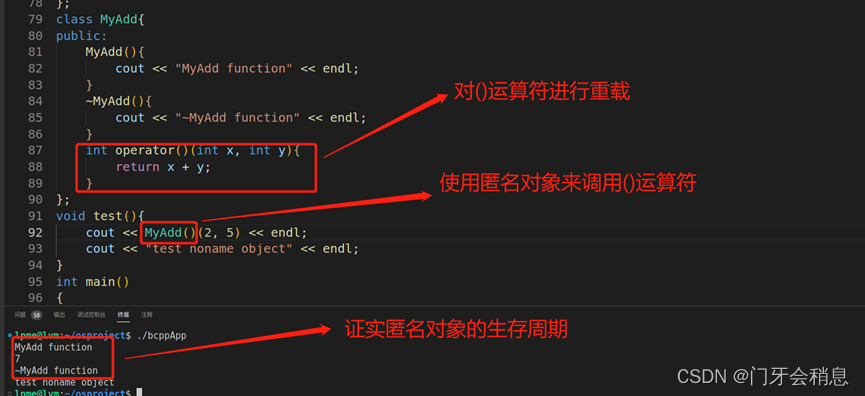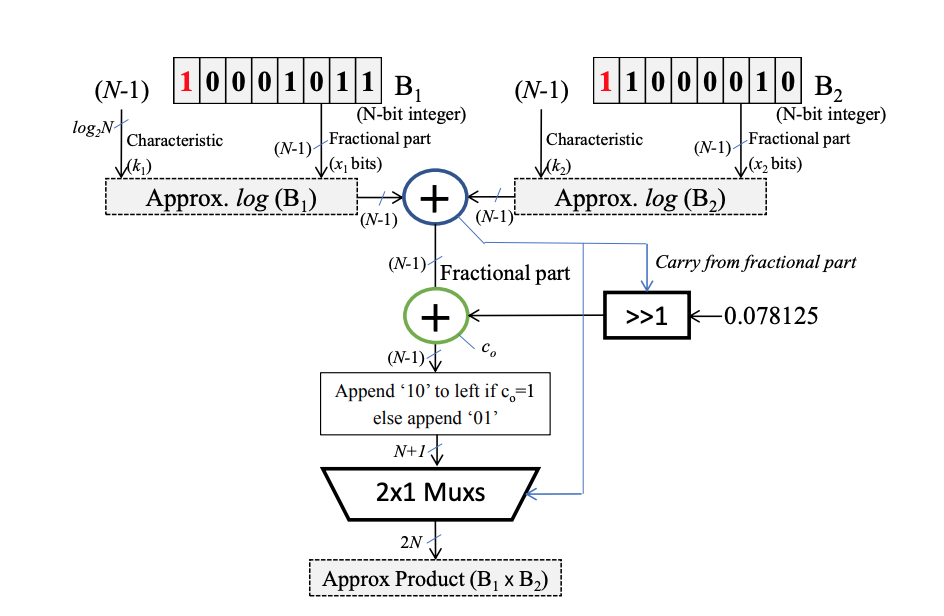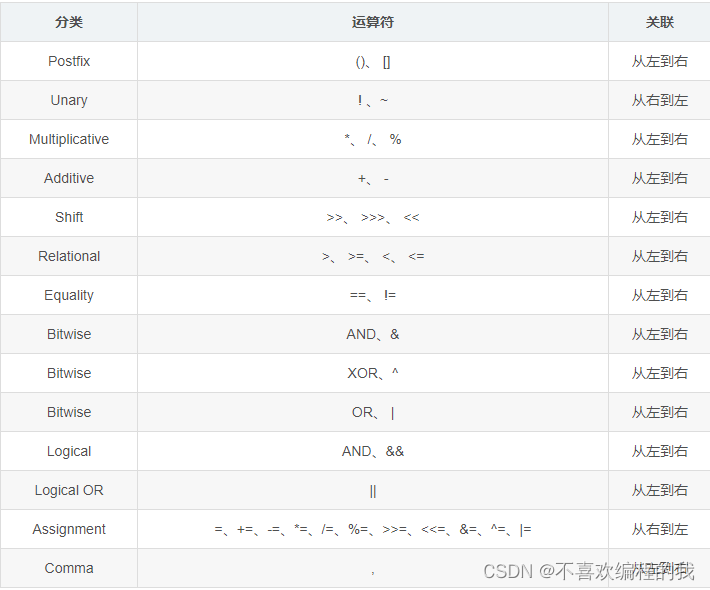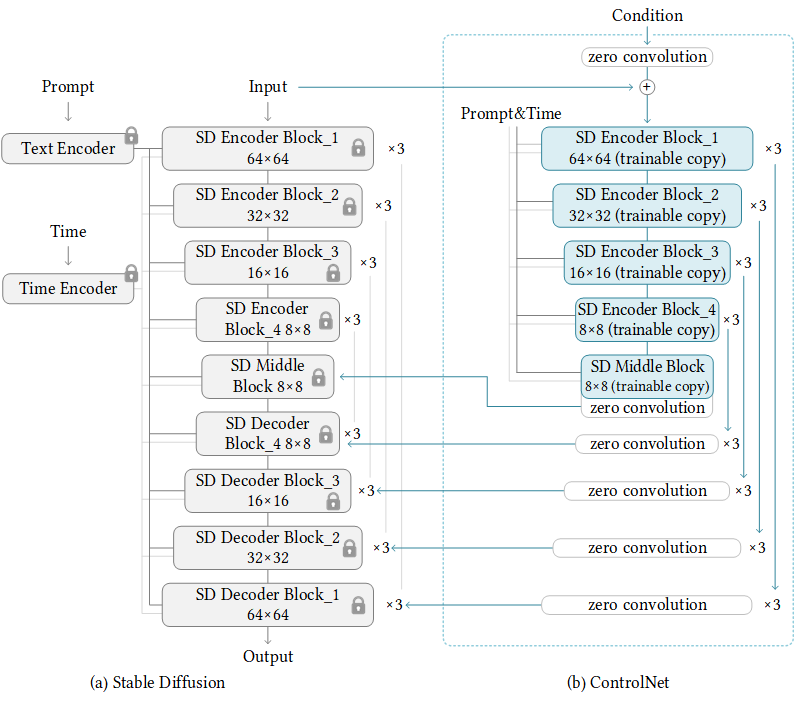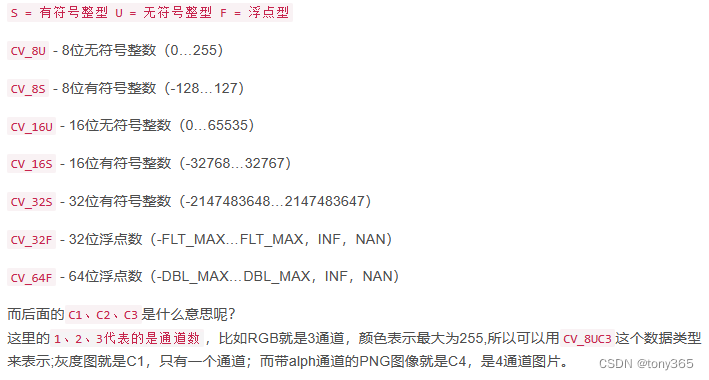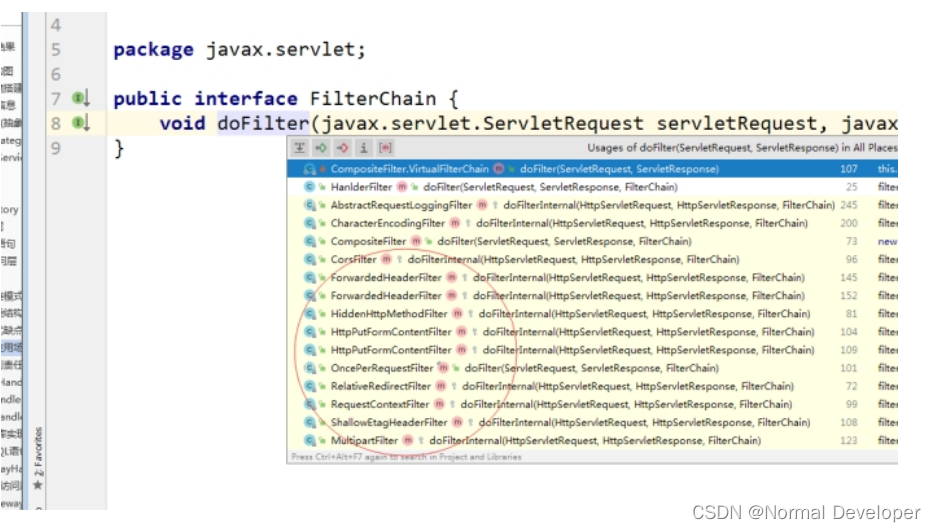介绍
基于队列的抽象同步器,它是jdk中所有显示的线程同步工具的基础,像ReentrantLock/DelayQueue/CountdownLatch等等,都是借助AQS实现的。
public abstract class AbstractQueuedSynchronizer
extends AbstractOwnableSynchronizer
implements java.io.Serializable {

内部类
Node
AQS中的Node内部类的作用就是以队列的方式来存放线程节点
/**
* Wait queue node class.
*
* <p>The wait queue is a variant of a "CLH" (Craig, Landin, and
* Hagersten) lock queue. CLH locks are normally used for
* spinlocks. We instead use them for blocking synchronizers, but
* use the same basic tactic of holding some of the control
* information about a thread in the predecessor of its node. A
* "status" field in each node keeps track of whether a thread
* should block. A node is signalled when its predecessor
* releases. Each node of the queue otherwise serves as a
* specific-notification-style monitor holding a single waiting
* thread. The status field does NOT control whether threads are
* granted locks etc though. A thread may try to acquire if it is
* first in the queue. But being first does not guarantee success;
* it only gives the right to contend. So the currently released
* contender thread may need to rewait.
*
* <p>To enqueue into a CLH lock, you atomically splice it in as new
* tail. To dequeue, you just set the head field.
* <pre>
* +------+ prev +-----+ +-----+
* head | | <---- | | <---- | | tail
* +------+ +-----+ +-----+
* </pre>
*
* <p>Insertion into a CLH queue requires only a single atomic
* operation on "tail", so there is a simple atomic point of
* demarcation from unqueued to queued. Similarly, dequeuing
* involves only updating the "head". However, it takes a bit
* more work for nodes to determine who their successors are,
* in part to deal with possible cancellation due to timeouts
* and interrupts.
*
* <p>The "prev" links (not used in original CLH locks), are mainly
* needed to handle cancellation. If a node is cancelled, its
* successor is (normally) relinked to a non-cancelled
* predecessor. For explanation of similar mechanics in the case
* of spin locks, see the papers by Scott and Scherer at
* http://www.cs.rochester.edu/u/scott/synchronization/
*
* <p>We also use "next" links to implement blocking mechanics.
* The thread id for each node is kept in its own node, so a
* predecessor signals the next node to wake up by traversing
* next link to determine which thread it is. Determination of
* successor must avoid races with newly queued nodes to set
* the "next" fields of their predecessors. This is solved
* when necessary by checking backwards from the atomically
* updated "tail" when a node's successor appears to be null.
* (Or, said differently, the next-links are an optimization
* so that we don't usually need a backward scan.)
*
* <p>Cancellation introduces some conservatism to the basic
* algorithms. Since we must poll for cancellation of other
* nodes, we can miss noticing whether a cancelled node is
* ahead or behind us. This is dealt with by always unparking
* successors upon cancellation, allowing them to stabilize on
* a new predecessor, unless we can identify an uncancelled
* predecessor who will carry this responsibility.
*
* <p>CLH queues need a dummy header node to get started. But
* we don't create them on construction, because it would be wasted
* effort if there is never contention. Instead, the node
* is constructed and head and tail pointers are set upon first
* contention.
*
* <p>Threads waiting on Conditions use the same nodes, but
* use an additional link. Conditions only need to link nodes
* in simple (non-concurrent) linked queues because they are
* only accessed when exclusively held. Upon await, a node is
* inserted into a condition queue. Upon signal, the node is
* transferred to the main queue. A special value of status
* field is used to mark which queue a node is on.
*
* <p>Thanks go to Dave Dice, Mark Moir, Victor Luchangco, Bill
* Scherer and Michael Scott, along with members of JSR-166
* expert group, for helpful ideas, discussions, and critiques
* on the design of this class.
*/
static final class Node {
/** Marker to indicate a node is waiting in shared mode */
//用来表示在共享模式下等待的标记
static final Node SHARED = new Node();
/** Marker to indicate a node is waiting in exclusive mode */
//用来表示在独占模式下等待的标记
static final Node EXCLUSIVE = null;
/** waitStatus value to indicate thread has cancelled */
//waitStatus 的值,用来表示线程已经被取消
static final int CANCELLED = 1;
/** waitStatus value to indicate successor's thread needs unparking */
//waitStatus的值,用来表示后继线程都需要被挂起
static final int SIGNAL = -1;
/** waitStatus value to indicate thread is waiting on condition */
//waitStatus 的值,表示线程在一个条件上等待
static final int CONDITION = -2;
/**
* waitStatus value to indicate the next acquireShared should
* unconditionally propagate
* waitStatus 的值,表示下一个acquireShared应该无条件传播
*/
static final int PROPAGATE = -3;
/**
* Status field, taking on only the values:
* SIGNAL: The successor of this node is (or will soon be)
* blocked (via park), so the current node must
* unpark its successor when it releases or
* cancels. To avoid races, acquire methods must
* first indicate they need a signal,
* then retry the atomic acquire, and then,
* on failure, block.
* CANCELLED: This node is cancelled due to timeout or interrupt.
* Nodes never leave this state. In particular,
* a thread with cancelled node never again blocks.
* CONDITION: This node is currently on a condition queue.
* It will not be used as a sync queue node
* until transferred, at which time the status
* will be set to 0. (Use of this value here has
* nothing to do with the other uses of the
* field, but simplifies mechanics.)
* PROPAGATE: A releaseShared should be propagated to other
* nodes. This is set (for head node only) in
* doReleaseShared to ensure propagation
* continues, even if other operations have
* since intervened.
* 0: None of the above
*
* The values are arranged numerically to simplify use.
* Non-negative values mean that a node doesn't need to
* signal. So, most code doesn't need to check for particular
* values, just for sign.
*
* The field is initialized to 0 for normal sync nodes, and
* CONDITION for condition nodes. It is modified using CAS
* (or when possible, unconditional volatile writes).
* 等待状态值 仅接收以上4个值和默认的0
*/
volatile int waitStatus;
/**
* Link to predecessor node that current node/thread relies on
* for checking waitStatus. Assigned during enqueuing, and nulled
* out (for sake of GC) only upon dequeuing. Also, upon
* cancellation of a predecessor, we short-circuit while
* finding a non-cancelled one, which will always exist
* because the head node is never cancelled: A node becomes
* head only as a result of successful acquire. A
* cancelled thread never succeeds in acquiring, and a thread only
* cancels itself, not any other node.
* 前驱结点
*/
volatile Node prev;
/**
* Link to the successor node that the current node/thread
* unparks upon release. Assigned during enqueuing, adjusted
* when bypassing cancelled predecessors, and nulled out (for
* sake of GC) when dequeued. The enq operation does not
* assign next field of a predecessor until after attachment,
* so seeing a null next field does not necessarily mean that
* node is at end of queue. However, if a next field appears
* to be null, we can scan prev's from the tail to
* double-check. The next field of cancelled nodes is set to
* point to the node itself instead of null, to make life
* easier for isOnSyncQueue.
* 后继节点
*/
volatile Node next;
/**
* The thread that enqueued this node. Initialized on
* construction and nulled out after use.
* 当前线程
*/
volatile Thread thread;
/**
* Link to next node waiting on condition, or the special
* value SHARED. Because condition queues are accessed only
* when holding in exclusive mode, we just need a simple
* linked queue to hold nodes while they are waiting on
* conditions. They are then transferred to the queue to
* re-acquire. And because conditions can only be exclusive,
* we save a field by using special value to indicate shared
* mode.
* 下一个条件等待节点
*/
Node nextWaiter;
/**
* Returns true if node is waiting in shared mode.
*/
final boolean isShared() {
return nextWaiter == SHARED;
}
/**
* Returns previous node, or throws NullPointerException if null.
* Use when predecessor cannot be null. The null check could
* be elided, but is present to help the VM.
*
* @return the predecessor of this node
* 获取当前节点的前驱节点
*/
final Node predecessor() throws NullPointerException {
Node p = prev;
if (p == null)
throw new NullPointerException();
else
return p;
}
Node() { // Used to establish initial head or SHARED marker
}
//用于addWaiter方法
Node(Thread thread, Node mode) { // Used by addWaiter
this.nextWaiter = mode;
this.thread = thread;
}
//用于Condition中使用
Node(Thread thread, int waitStatus) { // Used by Condition
this.waitStatus = waitStatus;
this.thread = thread;
}
}
同步队列中Node应该长下面这个样子:

ConditionObject
ConditionObject实现了在基于AQS锁的情况下对获取到锁的线程进行有条件的等待和唤醒,其主要的方法是await和signal以及它们的变种。
ConditionObject是专门为AQS服务的,它的节点的构造,状态的标志等都与AQS有关,在wait操作和signal操作时都需要去操作AQS的同步队列。
/**
* Condition implementation for a {@link
* AbstractQueuedSynchronizer} serving as the basis of a {@link
* Lock} implementation.
*
* <p>Method documentation for this class describes mechanics,
* not behavioral specifications from the point of view of Lock
* and Condition users. Exported versions of this class will in
* general need to be accompanied by documentation describing
* condition semantics that rely on those of the associated
* {@code AbstractQueuedSynchronizer}.
*
* <p>This class is Serializable, but all fields are transient,
* so deserialized conditions have no waiters.
*/
public class ConditionObject implements Condition, java.io.Serializable {
//序列化版本号
private static final long serialVersionUID = 1173984872572414699L;
/** First node of condition queue. */
//等待队列中第一个节点
private transient Node firstWaiter;
/** Last node of condition queue. */
//等待队列中最后一个节点
private transient Node lastWaiter;
/**
* Creates a new {@code ConditionObject} instance.
*/
public ConditionObject() { }
// Internal methods
/**
* Adds a new waiter to wait queue.
* @return its new wait node
* 向Condition队列添加等待者
*/
//将当前线程封装为节点并设置为CONDITION加入到Condition队列中,这里如果lastWaiter不为CONDITION状态,那么会把它踢出Condition队列;
private Node addConditionWaiter() {
Node t = lastWaiter;
// If lastWaiter is cancelled, clean out.
//检查节点的有效性,遍历队列,将状态不为CONDITION的节点剔除出队列
if (t != null && t.waitStatus != Node.CONDITION) {
unlinkCancelledWaiters();
t = lastWaiter;
}
//将当前线程封装成节点并且设置为CONDITION加入到Condition队列中去
Node node = new Node(Thread.currentThread(), Node.CONDITION);
//尾节点为空则表明队列为空,将新节点设置为头节点
if (t == null)
firstWaiter = node;
//尾节点不为空则表明队列不为空,将新节点设置为尾节点的后续节点
else
t.nextWaiter = node;
//将新节点设置为尾节点
lastWaiter = node;
return node;
}
/**
* Removes and transfers nodes until hit non-cancelled one or
* null. Split out from signal in part to encourage compilers
* to inline the case of no waiters.
* @param first (non-null) the first node on condition queue
* 唤醒等待队列中的第一个线程节点,
* 成功则返回
* 失败则尝试唤醒下一个线程节点
*/
private void doSignal(Node first) {
do {
//新的头节点为空则,队列为空
if ( (firstWaiter = first.nextWaiter) == null)
lastWaiter = null;
//断开头节点与队列的连接
first.nextWaiter = null;
//将头节点从等待队列中移除
} while (!transferForSignal(first) &&
(first = firstWaiter) != null);
}
/**
* Removes and transfers all nodes.
* @param first (non-null) the first node on condition queue
*/
private void doSignalAll(Node first) {
lastWaiter = firstWaiter = null;
do {
Node next = first.nextWaiter;
first.nextWaiter = null;
transferForSignal(first);
first = next;
} while (first != null);
}
/**
* Unlinks cancelled waiter nodes from condition queue.
* Called only while holding lock. This is called when
* cancellation occurred during condition wait, and upon
* insertion of a new waiter when lastWaiter is seen to have
* been cancelled. This method is needed to avoid garbage
* retention in the absence of signals. So even though it may
* require a full traversal, it comes into play only when
* timeouts or cancellations occur in the absence of
* signals. It traverses all nodes rather than stopping at a
* particular target to unlink all pointers to garbage nodes
* without requiring many re-traversals during cancellation
* storms.
* 检查逻辑
* 从等待队列的头节点开始遍历,如果头节点的waitStatus != Node.CONDITION则将firstWaiter的引用指向头结点的下一个节点,
* 则该下一个节点就变成了新的头节点,如此往复进行
*/
private void unlinkCancelledWaiters() {
//等待队列的头节点
Node t = firstWaiter;
//trail用于记录上一个有效的节点
Node trail = null;
//从头节点开始遍历
while (t != null) {
Node next = t.nextWaiter;
//当前线程的等待状态不是 Node.CONDITION等待状态
if (t.waitStatus != Node.CONDITION) {
//断开与下一个节点的连接 t独立出来便于GC回收
t.nextWaiter = null;
if (trail == null)
//将头节点的下一个节点设置为头节点
firstWaiter = next;
else
//通过nextWaiter连接到队列中
trail.nextWaiter = next;
if (next == null)
lastWaiter = trail;
}
else
//有效节点
trail = t;
//遍历下一个节点
t = next;
}
}
// public methods
/**
* Moves the longest-waiting thread, if one exists, from the
* wait queue for this condition to the wait queue for the
* owning lock.
*
* @throws IllegalMonitorStateException if {@link #isHeldExclusively}
* returns {@code false}
* signal的作用就是将await中Condition队列的第一个节点唤醒;
*/
public final void signal() {
//isHeldExclusively是需要子类继承的,在lock中判断当前线程是否是获得锁的线程,是则返回true,如果当前线程不是获取锁的线程则抛出异常
if (!isHeldExclusively())
throw new IllegalMonitorStateException();
//获取Condition队列中第一个Node
Node first = firstWaiter;
//队首的节点不为null
if (first != null)
//唤醒队首的节点
doSignal(first);
}
/**
* Moves all threads from the wait queue for this condition to
* the wait queue for the owning lock.
*
* @throws IllegalMonitorStateException if {@link #isHeldExclusively}
* returns {@code false}
*/
public final void signalAll() {
if (!isHeldExclusively())
throw new IllegalMonitorStateException();
Node first = firstWaiter;
if (first != null)
doSignalAll(first);
}
/**
* Implements uninterruptible condition wait.
* <ol>
* <li> Save lock state returned by {@link #getState}.
* <li> Invoke {@link #release} with saved state as argument,
* throwing IllegalMonitorStateException if it fails.
* <li> Block until signalled.
* <li> Reacquire by invoking specialized version of
* {@link #acquire} with saved state as argument.
* </ol>
*/
public final void awaitUninterruptibly() {
Node node = addConditionWaiter();
int savedState = fullyRelease(node);
boolean interrupted = false;
while (!isOnSyncQueue(node)) {
LockSupport.park(this);
if (Thread.interrupted())
interrupted = true;
}
if (acquireQueued(node, savedState) || interrupted)
selfInterrupt();
}
/*
* For interruptible waits, we need to track whether to throw
* InterruptedException, if interrupted while blocked on
* condition, versus reinterrupt current thread, if
* interrupted while blocked waiting to re-acquire.
*/
/** Mode meaning to reinterrupt on exit from wait */
private static final int REINTERRUPT = 1;
/** Mode meaning to throw InterruptedException on exit from wait */
private static final int THROW_IE = -1;
/**
* Checks for interrupt, returning THROW_IE if interrupted
* before signalled, REINTERRUPT if after signalled, or
* 0 if not interrupted.
* 检查Condition队列中节点在等待过程中的中断状态
* THROW_IE:表示在signal之前被中断唤醒
* REINTERRUPT:表示在signal之后有中断,在singnal之后被通断,需要保证singnal的行为最终完成,所以中断只用延续状态状态REINTERRUPT,不用抛出异常。
*/
private int checkInterruptWhileWaiting(Node node) {
//中断状态
return Thread.interrupted() ?
(transferAfterCancelledWait(node) ? THROW_IE : REINTERRUPT) :
0;
}
/**
* Throws InterruptedException, reinterrupts current thread, or
* does nothing, depending on mode.
*/
private void reportInterruptAfterWait(int interruptMode)
throws InterruptedException {
if (interruptMode == THROW_IE)
throw new InterruptedException();
else if (interruptMode == REINTERRUPT)
selfInterrupt();
}
/**
* Implements interruptible condition wait.
* <ol>
* <li> If current thread is interrupted, throw InterruptedException.
* <li> Save lock state returned by {@link #getState}.
* <li> Invoke {@link #release} with saved state as argument,
* throwing IllegalMonitorStateException if it fails.
* <li> Block until signalled or interrupted.
* <li> Reacquire by invoking specialized version of
* {@link #acquire} with saved state as argument.
* <li> If interrupted while blocked in step 4, throw InterruptedException.
* </ol>
*等候机制: 持有锁的线程调用await方法将会主动放弃锁,将其加入等待队列中
* 等候机制的操作分为如下几步:
* 1.调用addConditionWaiter方法,将节点添加到等候队列
* 2.调用fullyRelease方法,释放锁机制
* 3.while循环,判断当前节点是否在同步队列中,如果不在则挂起当前线程
* 4.获取锁,并判断线程是否中断
*/
public final void await() throws InterruptedException {
//await()方法对中断敏感,线程中断为true时调用await()就会抛出异常
if (Thread.interrupted())
throw new InterruptedException();
//将当前线程封装成节点并且设置为CONDITION加入到Condition队列中去,这里如果lastWaiter不为CONDITION状态,那么会把它踢出Condition队列。
Node node = addConditionWaiter();
//释放node节点线程的锁, 锁可能有重入,所以这里不是直接调用AQS的release方法,详情见fullyRelease说明
int savedState = fullyRelease(node);
//标记线程在await过程中的中断转态,0表示未中断
int interruptMode = 0;
//判断节点是否在同步队列中,只有node节点进入了同步队列循环才会结束(即,被signal了)
while (!isOnSyncQueue(node)) {
//不再同步队列中,则使用LockSupport.park将其挂起
LockSupport.park(this);
//线程被唤醒或者中断后,判断线程的中断状态
if ((interruptMode = checkInterruptWhileWaiting(node)) != 0)
//中断则推出循环
break;
}
//线程被唤醒后重新获取锁,锁状态恢复到savedState
//不管线程是:未中断,还是signal中断,singnal后中断,前面的代码 都会保证node节点进入同步队列。
//acquireQueued 方法获取到锁,并且在获取锁park的过程中有被中断,并且之前在await过程中,不是被signal之前就中断的情况,则标记后续处理中断的情况为interruptMode。
if (acquireQueued(node, savedState) && interruptMode != THROW_IE)
interruptMode = REINTERRUPT;
//重新获取到锁,把节点从condition队列中去除,同时也会清除被取消的节点
if (node.nextWaiter != null) // clean up if cancelled
unlinkCancelledWaiters();
//线程被中断,根据中断条件选择抛出异常或者重新中断传递状态
if (interruptMode != 0)
reportInterruptAfterWait(interruptMode);
}
/**
* Implements timed condition wait.
* <ol>
* <li> If current thread is interrupted, throw InterruptedException.
* <li> Save lock state returned by {@link #getState}.
* <li> Invoke {@link #release} with saved state as argument,
* throwing IllegalMonitorStateException if it fails.
* <li> Block until signalled, interrupted, or timed out.
* <li> Reacquire by invoking specialized version of
* {@link #acquire} with saved state as argument.
* <li> If interrupted while blocked in step 4, throw InterruptedException.
* </ol>
*/
public final long awaitNanos(long nanosTimeout)
throws InterruptedException {
if (Thread.interrupted())
throw new InterruptedException();
Node node = addConditionWaiter();
int savedState = fullyRelease(node);
final long deadline = System.nanoTime() + nanosTimeout;
int interruptMode = 0;
while (!isOnSyncQueue(node)) {
if (nanosTimeout <= 0L) {
transferAfterCancelledWait(node);
break;
}
if (nanosTimeout >= spinForTimeoutThreshold)
LockSupport.parkNanos(this, nanosTimeout);
if ((interruptMode = checkInterruptWhileWaiting(node)) != 0)
break;
nanosTimeout = deadline - System.nanoTime();
}
if (acquireQueued(node, savedState) && interruptMode != THROW_IE)
interruptMode = REINTERRUPT;
if (node.nextWaiter != null)
unlinkCancelledWaiters();
if (interruptMode != 0)
reportInterruptAfterWait(interruptMode);
return deadline - System.nanoTime();
}
/**
* Implements absolute timed condition wait.
* <ol>
* <li> If current thread is interrupted, throw InterruptedException.
* <li> Save lock state returned by {@link #getState}.
* <li> Invoke {@link #release} with saved state as argument,
* throwing IllegalMonitorStateException if it fails.
* <li> Block until signalled, interrupted, or timed out.
* <li> Reacquire by invoking specialized version of
* {@link #acquire} with saved state as argument.
* <li> If interrupted while blocked in step 4, throw InterruptedException.
* <li> If timed out while blocked in step 4, return false, else true.
* </ol>
*/
public final boolean awaitUntil(Date deadline)
throws InterruptedException {
long abstime = deadline.getTime();
if (Thread.interrupted())
throw new InterruptedException();
Node node = addConditionWaiter();
int savedState = fullyRelease(node);
boolean timedout = false;
int interruptMode = 0;
while (!isOnSyncQueue(node)) {
if (System.currentTimeMillis() > abstime) {
timedout = transferAfterCancelledWait(node);
break;
}
LockSupport.parkUntil(this, abstime);
if ((interruptMode = checkInterruptWhileWaiting(node)) != 0)
break;
}
if (acquireQueued(node, savedState) && interruptMode != THROW_IE)
interruptMode = REINTERRUPT;
if (node.nextWaiter != null)
unlinkCancelledWaiters();
if (interruptMode != 0)
reportInterruptAfterWait(interruptMode);
return !timedout;
}
/**
* Implements timed condition wait.
* <ol>
* <li> If current thread is interrupted, throw InterruptedException.
* <li> Save lock state returned by {@link #getState}.
* <li> Invoke {@link #release} with saved state as argument,
* throwing IllegalMonitorStateException if it fails.
* <li> Block until signalled, interrupted, or timed out.
* <li> Reacquire by invoking specialized version of
* {@link #acquire} with saved state as argument.
* <li> If interrupted while blocked in step 4, throw InterruptedException.
* <li> If timed out while blocked in step 4, return false, else true.
* </ol>
*/
public final boolean await(long time, TimeUnit unit)
throws InterruptedException {
long nanosTimeout = unit.toNanos(time);
if (Thread.interrupted())
throw new InterruptedException();
Node node = addConditionWaiter();
int savedState = fullyRelease(node);
final long deadline = System.nanoTime() + nanosTimeout;
boolean timedout = false;
int interruptMode = 0;
while (!isOnSyncQueue(node)) {
if (nanosTimeout <= 0L) {
timedout = transferAfterCancelledWait(node);
break;
}
if (nanosTimeout >= spinForTimeoutThreshold)
LockSupport.parkNanos(this, nanosTimeout);
if ((interruptMode = checkInterruptWhileWaiting(node)) != 0)
break;
nanosTimeout = deadline - System.nanoTime();
}
if (acquireQueued(node, savedState) && interruptMode != THROW_IE)
interruptMode = REINTERRUPT;
if (node.nextWaiter != null)
unlinkCancelledWaiters();
if (interruptMode != 0)
reportInterruptAfterWait(interruptMode);
return !timedout;
}
// support for instrumentation
/**
* Returns true if this condition was created by the given
* synchronization object.
*
* @return {@code true} if owned
*/
final boolean isOwnedBy(AbstractQueuedSynchronizer sync) {
return sync == AbstractQueuedSynchronizer.this;
}
/**
* Queries whether any threads are waiting on this condition.
* Implements {@link AbstractQueuedSynchronizer#hasWaiters(ConditionObject)}.
*
* @return {@code true} if there are any waiting threads
* @throws IllegalMonitorStateException if {@link #isHeldExclusively}
* returns {@code false}
*/
protected final boolean hasWaiters() {
if (!isHeldExclusively())
throw new IllegalMonitorStateException();
for (Node w = firstWaiter; w != null; w = w.nextWaiter) {
if (w.waitStatus == Node.CONDITION)
return true;
}
return false;
}
/**
* Returns an estimate of the number of threads waiting on
* this condition.
* Implements {@link AbstractQueuedSynchronizer#getWaitQueueLength(ConditionObject)}.
*
* @return the estimated number of waiting threads
* @throws IllegalMonitorStateException if {@link #isHeldExclusively}
* returns {@code false}
*/
protected final int getWaitQueueLength() {
if (!isHeldExclusively())
throw new IllegalMonitorStateException();
int n = 0;
for (Node w = firstWaiter; w != null; w = w.nextWaiter) {
if (w.waitStatus == Node.CONDITION)
++n;
}
return n;
}
/**
* Returns a collection containing those threads that may be
* waiting on this Condition.
* Implements {@link AbstractQueuedSynchronizer#getWaitingThreads(ConditionObject)}.
*
* @return the collection of threads
* @throws IllegalMonitorStateException if {@link #isHeldExclusively}
* returns {@code false}
*/
protected final Collection<Thread> getWaitingThreads() {
if (!isHeldExclusively())
throw new IllegalMonitorStateException();
ArrayList<Thread> list = new ArrayList<Thread>();
for (Node w = firstWaiter; w != null; w = w.nextWaiter) {
if (w.waitStatus == Node.CONDITION) {
Thread t = w.thread;
if (t != null)
list.add(t);
}
}
return list;
}
}
节点与节点之间通过前一个节点的nextWaiter指向下一个节点。所以不同于AbstractQueuedSynchronizer中的等待队列(同步队列)是双向的,ConditionObject中的等待队列是单向链表。
Condition等待队列中应该长如下这个样子:
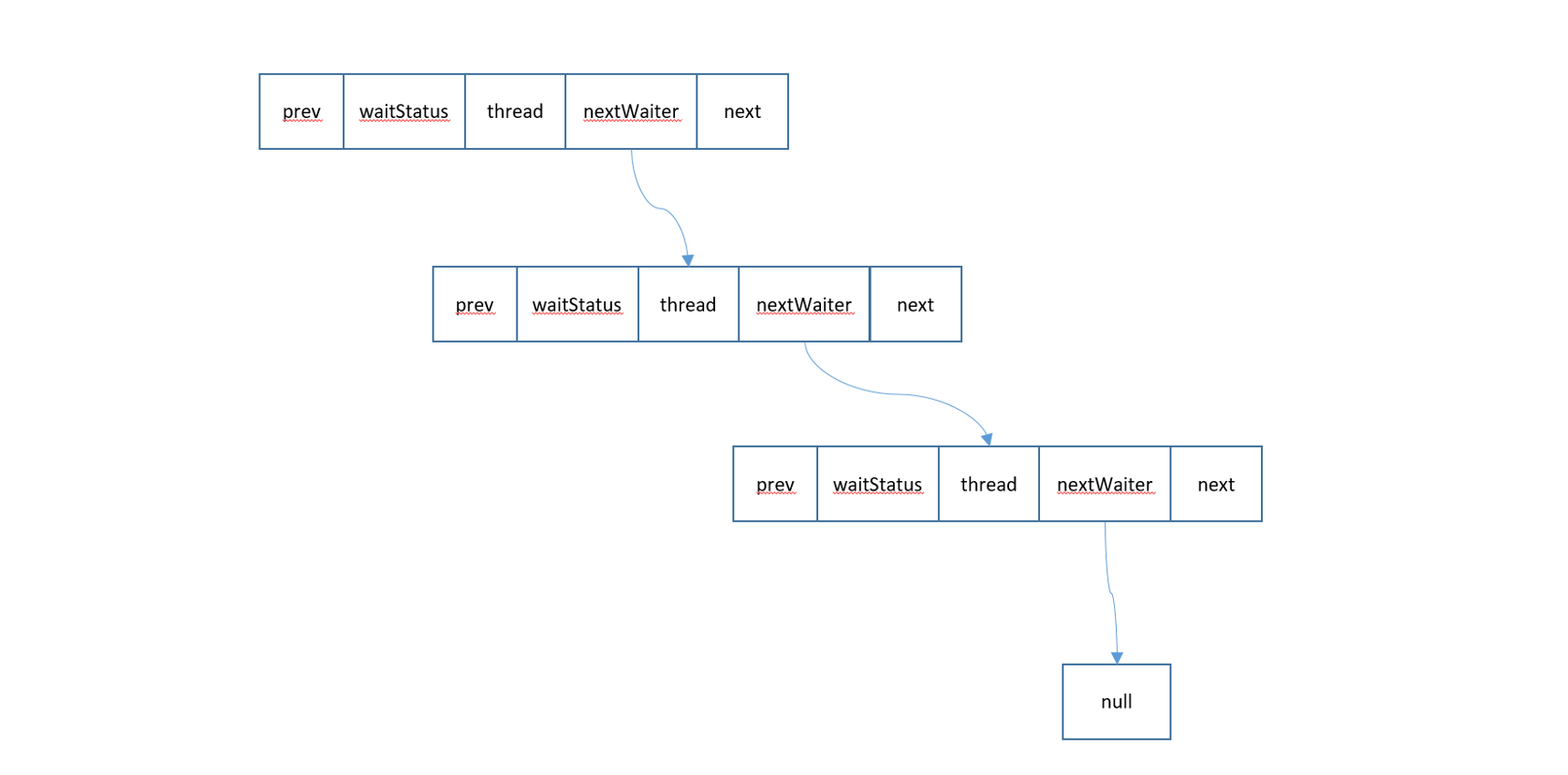
常用方法
acquire
获取锁
/**
* Acquires in exclusive mode, ignoring interrupts. Implemented
* by invoking at least once {@link #tryAcquire},
* returning on success. Otherwise the thread is queued, possibly
* repeatedly blocking and unblocking, invoking {@link
* #tryAcquire} until success. This method can be used
* to implement method {@link Lock#lock}.
*
* @param arg the acquire argument. This value is conveyed to
* {@link #tryAcquire} but is otherwise uninterpreted and
* can represent anything you like.
*/
public final void acquire(int arg) {
//尝试获取锁
if (!tryAcquire(arg) &&
//addWaiter:将线程封装到 Node 节点并添加到队列尾部
//acquireQueued查看当前排队的 Node 是否在队列的前面,如果在前面,尝试获取锁资源。如果没在前面,线程进入到阻塞状态。
acquireQueued(addWaiter(Node.EXCLUSIVE), arg))
//中断当前线程,等待唤醒
selfInterrupt();
}
①尝试获取锁
②如果获取锁没有成功,则构造节点加入等待队列中
③如果节点入队列成功,则线程自我中断让出资源。
tryAcquire
尝试获取锁
/**
* Attempts to acquire in exclusive mode. This method should query
* if the state of the object permits it to be acquired in the
* exclusive mode, and if so to acquire it.
*
* <p>This method is always invoked by the thread performing
* acquire. If this method reports failure, the acquire method
* may queue the thread, if it is not already queued, until it is
* signalled by a release from some other thread. This can be used
* to implement method {@link Lock#tryLock()}.
*
* <p>The default
* implementation throws {@link UnsupportedOperationException}.
*
* @param arg the acquire argument. This value is always the one
* passed to an acquire method, or is the value saved on entry
* to a condition wait. The value is otherwise uninterpreted
* and can represent anything you like.
* @return {@code true} if successful. Upon success, this object has
* been acquired.
* @throws IllegalMonitorStateException if acquiring would place this
* synchronizer in an illegal state. This exception must be
* thrown in a consistent fashion for synchronization to work
* correctly.
* @throws UnsupportedOperationException if exclusive mode is not supported
*/
protected boolean tryAcquire(int arg) {
throw new UnsupportedOperationException();
}
我们找到tryAcquire方法发现,直接抛出了一个异常。将tryAcquire的具体实现预留给各种锁来实现
addWaiter
当获取锁失败时,就开始构造节点入队列了。
/**
* Creates and enqueues node for current thread and given mode.
*
* @param mode Node.EXCLUSIVE for exclusive, Node.SHARED for shared
* @return the new node
*/
private Node addWaiter(Node mode) {
//创建节点 将当前线程封装为Node对象,当mode为null,代表互斥锁
Node node = new Node(Thread.currentThread(), mode);
// Try the fast path of enq; backup to full enq on failure
//快速入队,入队不成功则交由enq来实现
//当前尾节点
Node pred = tail;
//如果队列没有节点 创建一个哨兵节点
if (pred != null) {
// 当前线程Node节点的prev指向pred节点
node.prev = pred;
// 以CAS方式,尝试将tail指向node节点
if (compareAndSetTail(pred, node)) {
// 将pred的next指向node
pred.next = node;
return node;
}
}
// 如果上述方式,CAS操作失败,导致加入到AQS末尾失败,就基于enq的方式添加到AQS队列
enq(node);
return node;
}
enq
/**
* Inserts node into queue, initializing if necessary. See picture above.
* @param node the node to insert
* @return node's predecessor
*/
private Node enq(final Node node) {
// 死循环,直到插入成功
for (;;) {
Node t = tail;
//尾节点为null 即等待队列为空
if (t == null) { // Must initialize
//创建哨兵节点 如果尾节点为null,说明同步队列还未初始化,则CAS操作新建头节点
if (compareAndSetHead(new Node()))
tail = head;
} else {
// 将node的prev指向当前的tail节点
node.prev = t;
// CAS尝试将node变成tail节点
if (compareAndSetTail(t, node)) {
// 将之前尾节点的next指向要插入的节点
t.next = node;
return t;
}
}
}
}
acquireQueued
/**
* Acquires in exclusive uninterruptible mode for thread already in
* queue. Used by condition wait methods as well as acquire.
*
* @param node the node
* @param arg the acquire argument
* @return {@code true} if interrupted while waiting
*线程被构造为节点进入队列后,接下来就是对队列中的节点进行获取锁的处理
*/
final boolean acquireQueued(final Node node, int arg) {
boolean failed = true;
try {
//中断标识
boolean interrupted = false;
for (;;) {
// 获取node的前驱节点
final Node p = node.predecessor();
//如果前一个节点为head头节点,说明当前节点应该获取锁,尝试获取锁资源
if (p == head && tryAcquire(arg)) {
// 尝试获取锁资源成功,将头节点指向获取锁成功的节点,清空节点的thread和prev了,该节点成为新的哨兵节点
setHead(node);
// 将之前的头节点的next指向null,帮助快速GC
p.next = null; // help GC
failed = false;
return interrupted;
}
//如果前一个节点不是head头节点或者获取锁资源失败
if (shouldParkAfterFailedAcquire(p, node) &&
//尝试将线程park
parkAndCheckInterrupt())
interrupted = true;
}
} finally {
if (failed)
//获取锁失败,取消竞争锁
cancelAcquire(node);
}
}
cancelAcquire
取消获取锁
/**
* Cancels an ongoing attempt to acquire.
*
* @param node the node
*/
private void cancelAcquire(Node node) {
// Ignore if node doesn't exist
//如果待取消节点(node)为null,则直接返回。
if (node == null)
return;
// 将node的thread置为null;取消节点对线程的引用
node.thread = null;
// Skip cancelled predecessors
//将node节点往前驱节点方向所有连续的取消状态的节点出队
Node pred = node.prev;
while (pred.waitStatus > 0)
node.prev = pred = pred.prev;
// predNext is the apparent node to unsplice. CASes below will
// fail if not, in which case, we lost race vs another cancel
// or signal, so no further action is necessary.
Node predNext = pred.next;
// Can use unconditional write instead of CAS here.
// After this atomic step, other Nodes can skip past us.
// Before, we are free of interference from other threads.
//1只有这里才设置为已取消状态
node.waitStatus = Node.CANCELLED;
// If we are the tail, remove ourselves.
//2如果当前节点为尾节点,当前节点出队,
if (node == tail && compareAndSetTail(node, pred)) {
//将前节点(这个时候已经是队尾节点)的next指向null,这里不保证它一定会成功,因为可能有其它新节点加入,用CAS方式避免将覆盖其它线程的操作。
compareAndSetNext(pred, predNext, null);
} else {
// If successor needs signal, try to set pred's next-link
// so it will get one. Otherwise wake it up to propagate.
int ws;
//3如果当前节点不是尾节点,也不是头节点
if (pred != head &&
//前节点状态已经为Node.SIGNAL 或者 将前节点状态更改为Node.SIGNAL成功
((ws = pred.waitStatus) == Node.SIGNAL ||
(ws <= 0 && compareAndSetWaitStatus(pred, ws, Node.SIGNAL))) &&
pred.thread != null) {
Node next = node.next;
//当前节点的next节点存在并且没有取消
if (next != null && next.waitStatus <= 0)
//则将前节点的next指向node节点的next
compareAndSetNext(pred, predNext, next);
} else {
//唤醒后继节点
unparkSuccessor(node);
}
node.next = node; // help GC
}
}
unparkSuccessor
唤醒后继节点
/**
* Wakes up node's successor, if one exists.
*
* @param node the node
*/
private void unparkSuccessor(Node node) {
/*
* If status is negative (i.e., possibly needing signal) try
* to clear in anticipation of signalling. It is OK if this
* fails or if status is changed by waiting thread.
*/
//获取node节点的状态,在唤醒后继之前,先将node节点状态改为0
int ws = node.waitStatus;
if (ws < 0)
//如果node节点状态小于0,cas修改为0
compareAndSetWaitStatus(node, ws, 0);
/*
* Thread to unpark is held in successor, which is normally
* just the next node. But if cancelled or apparently null,
* traverse backwards from tail to find the actual
* non-cancelled successor.
*/
//当前节点的next节点
Node s = node.next;
//如果node的后继节点被取消,则从队尾向node节点遍历,找到距离node节点最近的waitStatus<=0的节点,然后唤醒s节点
if (s == null || s.waitStatus > 0) {
// next节点不需要唤醒,需要唤醒next的next
s = null;
// 从尾部往前找,找到状态正常的节点。(小于等于0代表正常状态)
for (Node t = tail; t != null && t != node; t = t.prev)
if (t.waitStatus <= 0)
s = t;
}
//经过循环的获取,如果拿到状态正常的节点,并且不为null
if (s != null)
//线程唤醒
LockSupport.unpark(s.thread);
}
release
释放锁
/**
* Releases in exclusive mode. Implemented by unblocking one or
* more threads if {@link #tryRelease} returns true.
* This method can be used to implement method {@link Lock#unlock}.
*
* @param arg the release argument. This value is conveyed to
* {@link #tryRelease} but is otherwise uninterpreted and
* can represent anything you like.
* @return the value returned from {@link #tryRelease}
* release利用tryRelease先进行释放锁,tryRealse是由子类实现的方法,可以确保线程是获取到锁的,并进行释放锁,
* unparkSuccessor主要是利用LockSupport.unpark唤醒线程;
*/
public final boolean release(int arg) {
//尝试释放锁,这个方法是由子类实现的方法
if (tryRelease(arg)) {
Node h = head;
//头节点不为如果节点状态不是CANCELLED,也就是线程没有被取消,也就是不为0的,就进行唤醒
if (h != null && h.waitStatus != 0)
//唤醒线程
unparkSuccessor(h);
return true;
}
return false;
}
tryRelease
尝试释放锁
/**
* Attempts to set the state to reflect a release in exclusive
* mode.
*
* <p>This method is always invoked by the thread performing release.
*
* <p>The default implementation throws
* {@link UnsupportedOperationException}.
*
* @param arg the release argument. This value is always the one
* passed to a release method, or the current state value upon
* entry to a condition wait. The value is otherwise
* uninterpreted and can represent anything you like.
* @return {@code true} if this object is now in a fully released
* state, so that any waiting threads may attempt to acquire;
* and {@code false} otherwise.
* @throws IllegalMonitorStateException if releasing would place this
* synchronizer in an illegal state. This exception must be
* thrown in a consistent fashion for synchronization to work
* correctly.
* @throws UnsupportedOperationException if exclusive mode is not supported
*/
protected boolean tryRelease(int arg) {
throw new UnsupportedOperationException();
}
交由子类实现
